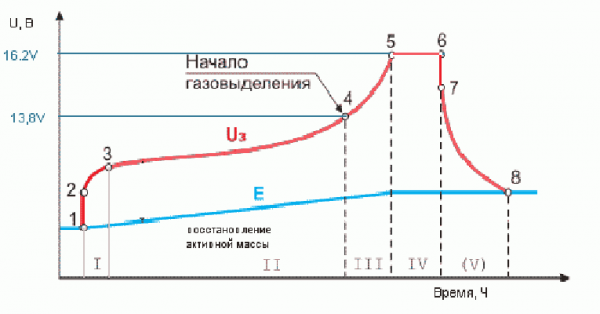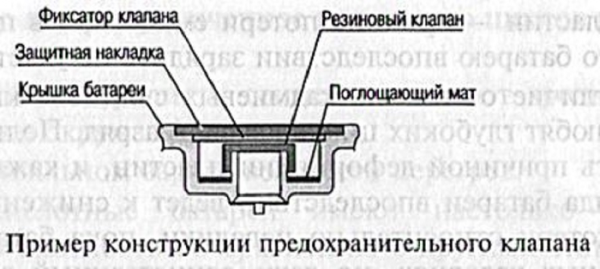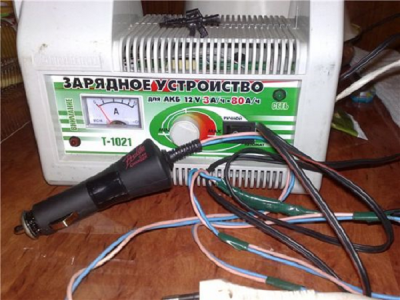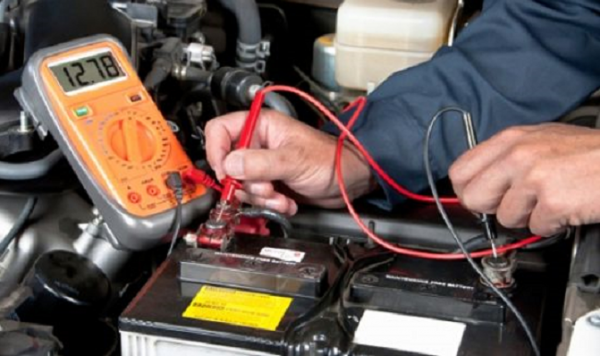How to charge the maintenance free battery
Opinion is common - to charge the battery at home or in the garage there are no special knowledge. In fact, everything is much more complicated.
The term "non-serving device" often misleads the mass consumer. The motorist believes that the status "maintenance free" practically guarantees the trouble-free operation of the automotive battery without additional effort. Why charge the maintenance-free device at home, if you can charge at the station that. It seemed that the question was how to charge the car's maintenance-free battery, should not occur in principle.
For more than a hundred central history, passing through numerous modifications and improvements, a modern battery remained, in fact, a primitive electrochemical source of current, which physicist Haston fee and improved Camill for the 19th century. Recently, the device had to charge the way proposed 100 years ago.
Correctly charge the car's maintenanceable battery is not easy, experience and knowledge is needed. Studies have proven that, starting to charge the battery, we launch about six dozen different processes and reactions that can radically affect the characteristics of the system. With a non-servant variant of the battery, you can not quickly charge it at once and go. The car's maintenance-free battery must be charged regularly and correctly, otherwise there are no problems.
How the battery is charging
In a simplified representation, when charging the battery, lead sulfate from electrolyte is restored on a negative electrode to a metal lead, and on a positive oxidizes to lead dioxide. The electrolyte density increases, which serves as one of the signs of increasing the accumulated energy. With an insufficient amount of lead sulfate in the electrolyte, the charge process is degenerated to the electrolysis of water solution to oxygen and hydrogen. Under the influence of the released gases, bubble bubbles occur, perceived by us as a boil. If you charge the battery correctly, you can avoid it.

When discharge, the return process takes place: on a minus lead dissolves in the electrolyte, and on the plus there is a recovery of lead dioxide to lead peroxide, the electrolyte density falls.
Since the emergence, the maintenance-free battery has acquired a lot of changes in the design. The loss of water during evaporation decreased, due to the sealed body and the use of special gas valves to remove gases that prevent water losses. The amount of electrolyte in banks is easy to check using a special window from transparent plastic, or through a translucent case material. Practically absent self-discharge. Advertising manufacturers says: the battery capabilities are such that charging a non-servant battery at home loses meaning.
Specific techniques on how to properly charge the maintenance-free car battery, should be based on many factors, not in the last queue in the state of the battery, the degree of its wear, the presence of internal damage and disposal of the electrode mass.
The transition to the maintenance-free car battery construction increased the service life without additional maintenance, thanks to:

Comparely recently emerged batteries, in which a specially condensed gel-shaped electrolyte is applied. But a significant practical advantage does not give a similar option, although it is much more expensive.
The idea of \u200b\u200bthe maintenance-free battery appeared within the framework of the concept of cheapening the production of cars by reducing the number of nodes to be repaired and restored, their replacement is disposable non-processed and non-servant components. To charge at home the maintenance-free battery was not planned.
Is charging a non-servant battery required
The charge obtained by a car battery from the AC generator directly depends on the mileage of the machine. The regulator relay is adjusted and configured to maintain the required charge current level, in parallel by providing the car power grid with the necessary power supply. So is it possible to charge the maintenanceable battery if the car's power engineer periodically supports the charge, and the battery manufacturer is not given an accurate guidelines?
An unequivocal response can be the recommendations of experienced acid rechargeable battery repair specialists - any technical devices should pass periodic maintenance, checking and adjustment. Charge the non-listed battery is needed at home.
The car generator is configured to provide optimal battery charger. With a charge current in 15a, the battery will be fully charged after a run of 100-150 km. Statistics shows that the engine launch in urban mileage conditions is carried out every 30-35 km. Thus, the average degree of charge of the car battery, at best, reaches 30-50% of the nominal container. If there are problems with the operation of the generator or the integral regulator, the container may fall to a critical 20% of the nominal. For non-servant car batteries, such a charge level is unacceptable - you need to additionally charge at home.
Constant insufficient charge of non-maintained batteries sharply reduces its performance in winter. The empirical dependence is adopted: a decrease in temperature by 1 degree below 20 ° C lowers the battery capacity by 1%. In a strong frost, one unsuccessful attempt to start the engine can become fatal for the battery. It is categorically impossible to charge it on the frost - only after heating to the positive temperature.
How to charge the maintenance free battery
Charge the maintenanceable battery at home is required at least once a month. It is advisable to perform not just charging the battery, but to carry out a training cycle. The essence of the battery workout is reduced to consistent operations charge-exposure-discharge. Such procedures will allow to reduce the sulfate of the car battery plates and increase the completeness of the accumulation of the charge.
Untested homemade chargers or cheap Chinese devices are completely unsuitable for the charge of a non-servant battery.

The best option for the maintenanceable battery will be the use of chargers with automatic stabilization according to a given voltage value with built-in digital voltage and current indicators. You can charge the devices of the Soviet era.
Charging the battery
To properly charge a non-servant battery:
- connect charger clamps to terminals and check the readings of the residual voltage on the battery. If the device shows below 11 V is almost the dead, the chances of reviving the battery is very small;
- install the charge voltage by 12.6 V and observe the behavior of the charge current. If the ammeter readings are unstable, it is possible that in one of the battery cans there is a circuit process. Stay the charge in the case of intensive gas formation - boiling, this is also a sign of the disease of the battery;
- install the charge voltage on the device 14.4 V. The charge current will decrease consistently, then stepwise increase its value, and further will gradually decrease. At this point, it is better to take a break and give a "relax" battery. Charge further after 1-2 hours.
4-5 hours after repeated connection, the current will decrease to 0.5-1a. If you do not stop charging, it is possible to increase the release of gases - boiling electrolyte. The final measurement of voltage on terminals is produced several hours after the end of charging and cooling the battery.

It is impossible to charge the car's battery with a device that gives voltage above 14.6 V. For example, at a voltage at the terminals of the charger over 15.6 V, the battery accumulates charge for 20 minutes, then the process of recharging with intensive separation of gases will begin. Refuse to quickly charge - all the charges with the charge voltage above 15.6 are deadly for the maintenance-free car battery.
Video How to check the maintenance-free battery:










